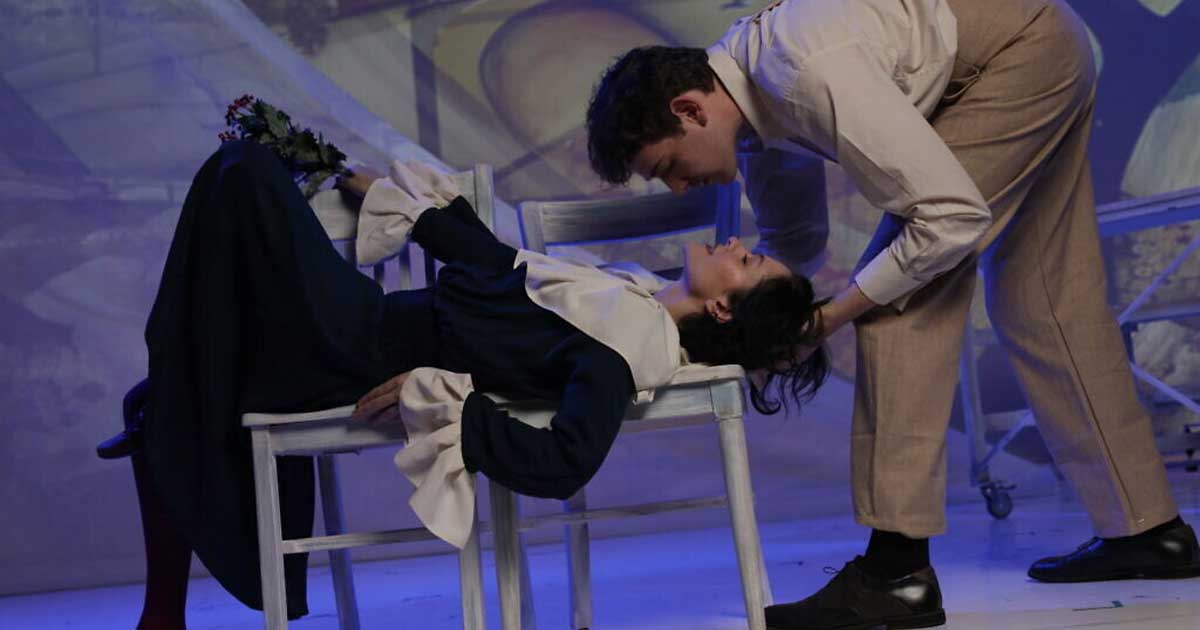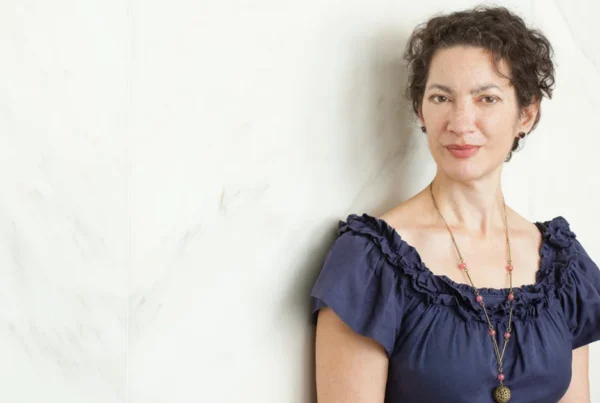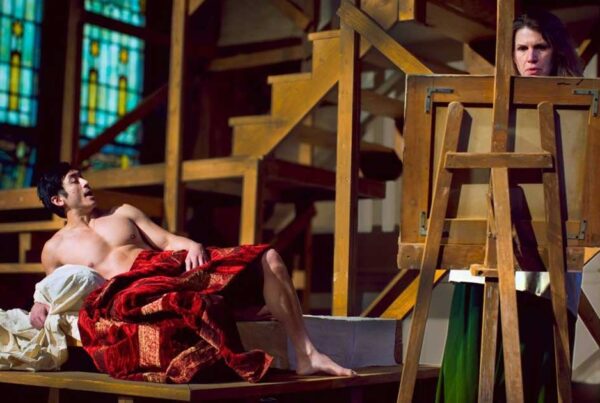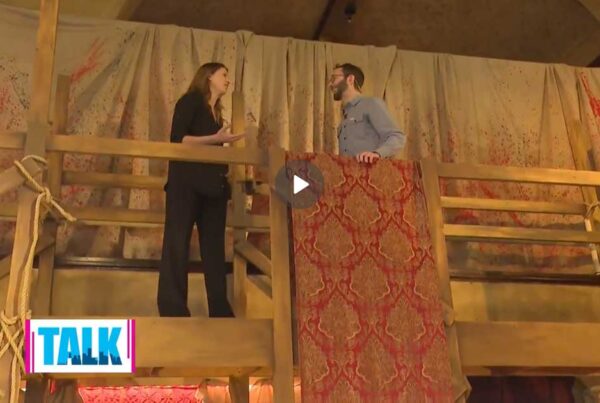
The Jewish Chronicle – During difficult moments such as the one we are going through now, nothing has made me feel calmer than looking back at my roots.
I first learned the Yiddish song “Tumbalalaika” the summer after seventh grade. I was at a sleepaway Jewish summer camp in Canada, and it was a Friday night.
My friend and I were walking in circles around the camp’s field, as was our Shabbat tradition. It was easy to see the stars shining down on us and it simply felt peaceful.
My friend began humming a tune. She told me it was an old Yiddish song her mom used to sing to her as a lullaby. Her grandparents had taught it to her mom. She taught me the song and, for years, whenever we saw each other, we sang it together.
Naturally, I was delighted to hear “Tumbalalaika” performed live when I saw Quantum Theatre’s “The Flying Lovers of Vitebsk” recently in Pittsburgh. “The Flying Lovers of Vitebsk” tells the story of Jewish artist Marc Chagall and his wife, Bella, who lived through the Holocaust and the Russian Revolution. The animated nostalgia-filled dancing and singing nearly brought me to tears — of joy — for the first time in weeks.
During difficult moments such as the one we are going through now, nothing has made me feel calmer than looking back at my roots. When the world goes low, I bury myself deeper into learning what various global Jewish communities have done to strengthen Jewish identity in the past.
For 90 minutes, I was inside paintings — I was the paint stroke moving back and forth on a canvas, switching between black and white and color. I was at a Jewish wedding; I was celebrating Shabbat in Europe. I was fully immersed in a time completely different than my own. And yet, with the current surge in antisemitism, and the fear that the Jewish people are facing daily, it is not a time so different than my own. But like Chagall, we, too, must find ways to push forward.
“The Flying Lovers of Vitebsk” included another popular Yiddish song — “Bei Mir Bistu Shein.” When I was in college, this song was a regular part of my university’s Jewish a cappella group’s repertoire. Twice a semester, I would sit in one of the large lecture halls listening to a cappella performances, waiting eagerly for this song. There was something so special about this song that, even after hearing hundreds of other songs, I couldn’t get it out of my head.
Flash forward to my junior year of college, and I finally had room in my schedule to take Yiddish language classes. I remember my professor telling us how integral music and theater are to understanding Yiddish culture. When you put the language to song, and song to the language, somehow, miraculously, you understand better what it meant to be a Jew living in the 1800s in Eastern Europe. Likewise, I connected better to Chagall and his wife because of the incorporation of Yiddish songs and language throughout the show.
In college, I also became a volunteer for The Together Plan, an international organization that supports Jews in Belarus yearning to rediscover Jewish life by promoting Jewish education and helping to revive Jewish traditions. One of the communities TTP works closely with is in Vitebsk, Belarus.
While Chagall talks about the destruction of his childhood hometown, Vitebsk, there is an active Jewish community today in that city.
In 2022, traveling Europe, I made a stop in Milan, Italy. While the Jewish community in Milan is fascinating, I otherwise felt it was a mediocre city. But a museum exhibition, “Marc Chagall: A Story of Two Worlds,” made the visit oh so worth it. There I viewed many illustrations related to Chagall’s roots in Vitebsk, his meetings with Bella and his memories of the Jewish community.
I was flooded with emotion and pride for the way Chagall so strikingly used colors, shapes and symbols to depict who he was and what he experienced. “The Flying Lovers of Vitebsk” used those same colors, shapes and symbols to create a beautiful set through Chagall’s art.
When I left Rodef Shalom Congregation after watching “The Flying Lovers of Vitebsk,” I wanted to go back inside and watch the performance again. I was not ready to depart from the world of my ancestors. A small part of me had forgotten, through all the distractions of the last few years, how critical Yiddish and Eastern Europe are to my Jewish identity.
If you get the chance, allow yourself to be reminded of who we are and where we come from. Go and see “The Flying Lovers of Vitebsk” and delight in the music that gets you stomping your feet, that pulls at your heartstrings. It will only make you feel more connected in a period when we need connection the most.




